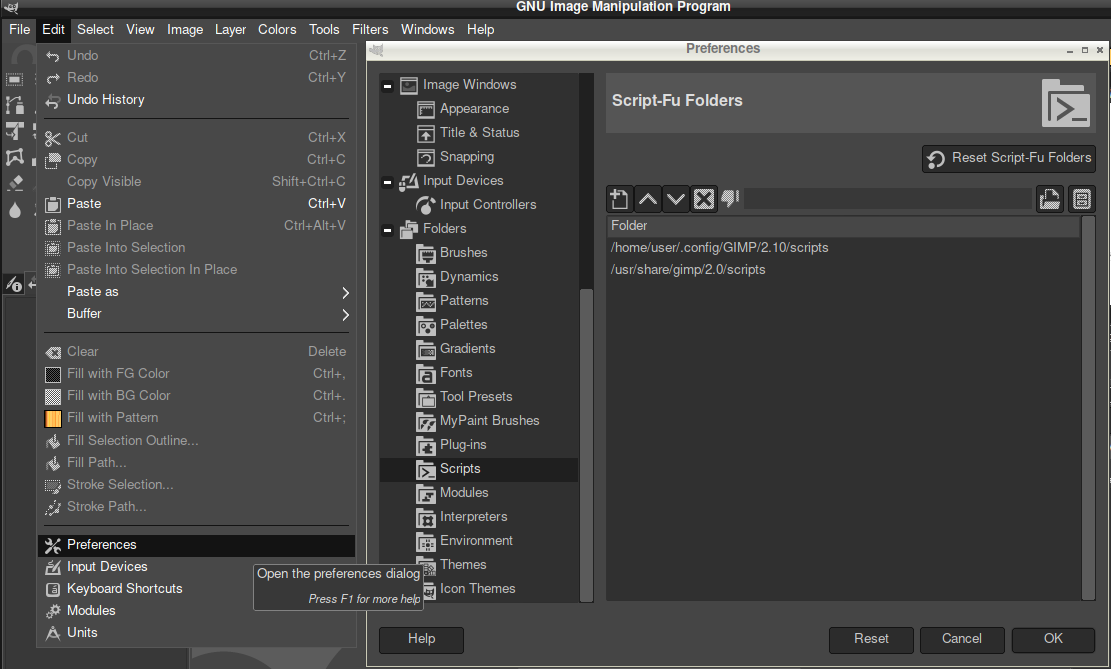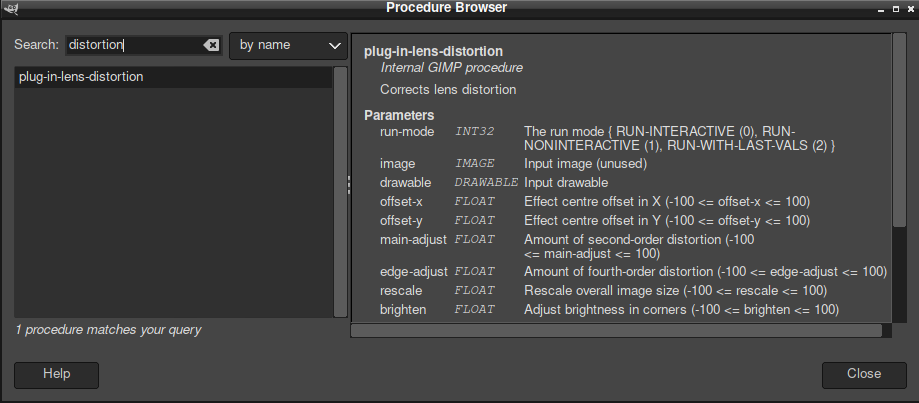GIMP multiple image processing
Date: February 20, 2020
It’s relatively easy to imagine a situation, when a hundred or more images need to have the same effect applied. Photo time-lapse, which needs ‘cut’ or ‘brighten’ operation is an example. For such tasks GIMP has opportunities for scripting and launching the application in command-line mode.
The idea is based on writing .scm script and placing it into necessary folder. GIMP scripts folder can be found in Edit -> Preferences -> Folders.

Official tutorial offers an example of script for unsharp masking. The script described below in this article can be downloaded here.
Popular language for writing scripts is Script-Fu. It’s syntax is based on defining functions using define, declaring variables via let* and running functions via (function1 param1 param2).
(define (script-correct-distortion filename distortion-main distortion-edge) defines a function script-correct-distortion with parameters filename, distortion-main and distortion-edge.
(let* ((image-file (car (gimp-file-load RUN-NONINTERACTIVE filename filename))) declares variable image-file as the file for processing.
(image-layer (car (gimp-image-get-active-layer image-file)))) declares variable image-layer as the active layer of image.
(plug-in-lens-distortion RUN-NONINTERACTIVE image-file image-layer 0 0 distortion-main distortion-edge 0 0) runs necessary effect over the image. Additional info about callable functions and their paramaters can be found on Help -> Procedure Browser page.

(gimp-file-save RUN-NONINTERACTIVE image-file image-layer filename filename) saves file.
(gimp-image-delete image-file))) deletes file from GIMP.
gimp -i -b '(script-correct-distortion "image.jpg" -10 -2)' -b '(gimp-quit 0)' command launched in Linux terminal (or Windows CMD) starts the script and closes command-line GIMP after processing is over.
The script is able to process one file, but it’s possible to process multiple files via file mask.
(define (script-correct-distortion-multiple file-pattern distortion-main distortion-edge) defines function.
(let* ((file-list (cadr (file-glob file-pattern 1)))) declares file-list valiable, which is assigned as a list of matching filenames.
(while (not (null? file-list)) start while loop
(let* ((file-name (car file-list)) declares file-name as the first element of file-list.
(image-file (car (gimp-file-load RUN-NONINTERACTIVE file-name file-name))) declares and assigns image-file as a file for processing.
(image-layer (car (gimp-image-get-active-layer image-file)))) declares and assigns active layer.
(plug-in-lens-distortion RUN-NONINTERACTIVE image-file image-layer 0 0 distortion-main distortion-edge 0 0) runs necessary script over the image.
(gimp-file-save RUN-NONINTERACTIVE image-file image-layer file-name file-name) saves image.
(gimp-image-delete image-file)) removes image from GIMP.
(set! file-list (cdr file-list))))) removes current image from the list to prevent infinite loop.
gimp -i -b '(script-correct-distortion-multiple "*.JPG" -10 -2)' -b '(gimp-quit 0)' command launched in Linux terminal (or Windows CMD) starts the script and closes command-line GIMP after processing is over.